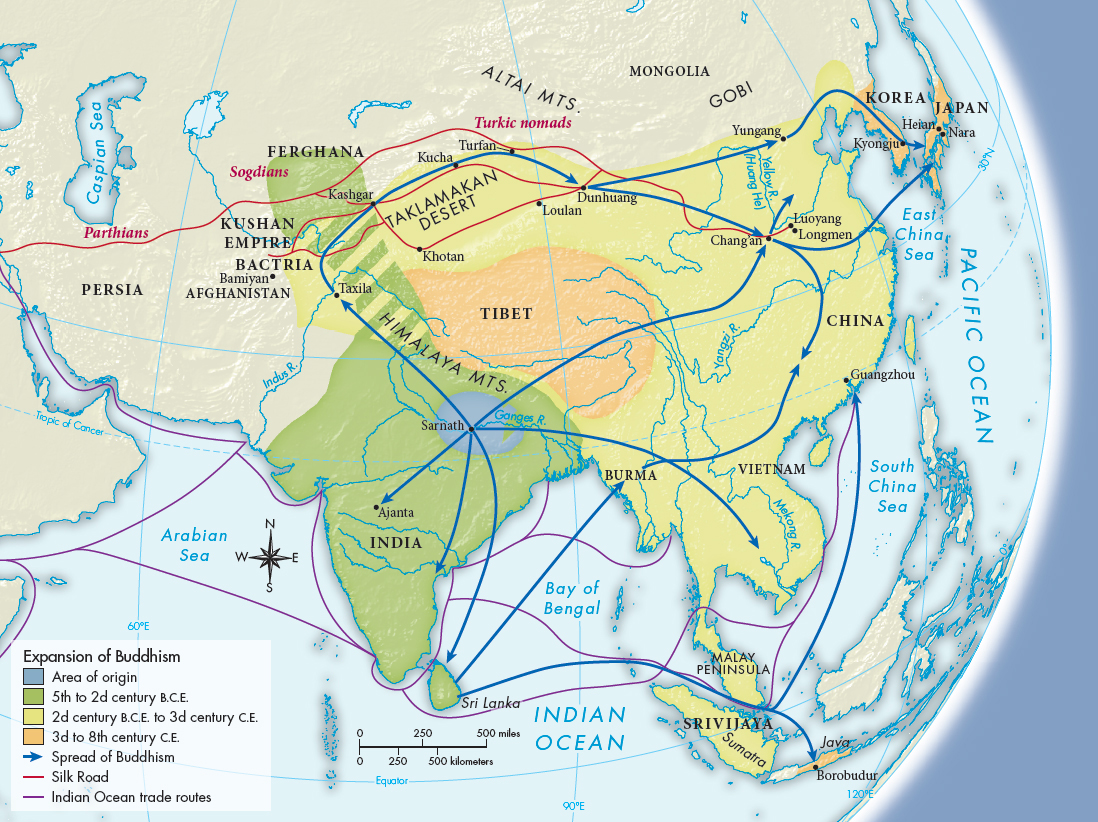Buddhism’s Path Through Central Asia
Under Ashoka in India (see “Reign of Ashoka, ca. 269–232 B.C.E.” in Chapter 3), Buddhism began to spread to Central Asia. This continued under the Kushan empire (ca. 50–250 C.E.). Over the next several centuries most of the city-states of Central Asia became centers of Buddhism, from Bamiyan northwest of Kabul, to Kucha, Khotan, Loulan, Turfan, and Dunhuang (Map 7.2).

MAP 7.2The Spread of Buddhism, ca. 500 B.C.E.–800 C.E.Buddhism spread throughout India in Ashoka’s time and beyond India in later centuries. The different forms of Buddhism found in Asia today reflect this history. The Mahayana Buddhism of Japan came via Central Asia, China, and Korea, with a secondary later route through Tibet. The Theravada Buddhism of Southeast Asia came directly from India and indirectly through Sri Lanka.> MAPPING THE PASTANALYZING THE MAP: Trace the routes of the spread of Buddhism by time period. How fast did Buddhism spread?CONNECTIONS: Why do you think Buddhism spread more to the east of India than to the west?
The form of Buddhism that spread from Central Asia to China, Japan, and Korea was called Mahayana, which means “Great Vehicle” (see “Siddhartha Gautama and Buddhism” in Chapter 3), reflecting the claims of its adherents to a more inclusive form of the religion. Influenced by the Iranian religions then prevalent in Central Asia, Buddhism became more devotional. The Buddha came to be treated as a god, the head of an expanding pantheon of other Buddhas and bodhisattvas (Buddhas-to-be). With the growth of this pantheon, Buddhism became as much a religion for laypeople as for monks and nuns.
